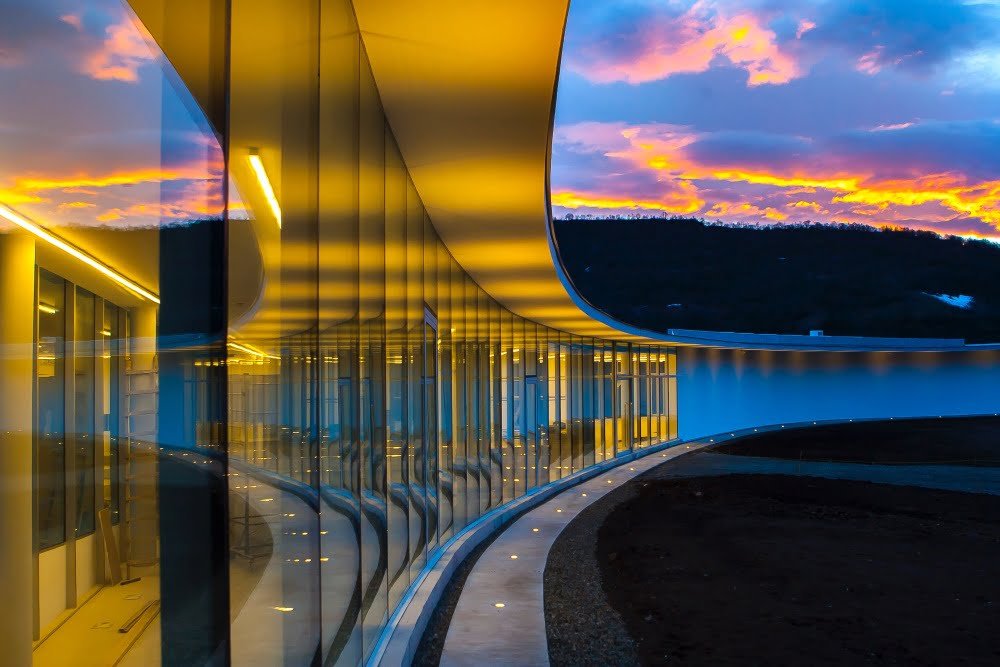This content was created by the Data Sharing Coalition, one of the founding partners of the CoE-DSC.
The Data Sharing Coalition supports organisations with realising use cases at scale to exploit value potential from data sharing and helps organisations to create required trust mechanisms to share data trusted and secure. In our blog section ‘Q&A with’, you learn more about our participants and their thoughts, vision and ideas about data sharing. Bram Schats, System Architect and co-founder of Avelution, shares their thoughts.
1. Could you introduce your organisation?
Avelution is a system integrator active within the build environment. We focus on performance monitoring of buildings and we guarantee the performance/quality requirements. These requirements are set by the government (e.g. energy consumption, sustainability) and by the owner or client (e.g. health, safety). We see that the government sets more requirements and that the customer’s wishes are increasingly progressive with regard to smart functionalities. However, buildings are still being developed in silos. All systems and installations in buildings – such as a building management system, fire alarm system, access control, camera system – are developed and managed as separate systems.
We make buildings more sustainable, healthier, and smarter by connecting these installations and systems and allowing them to communicate with each other. By unlocking (the value of this) data by means of a digital warehouse, we put a digital layer over the building and analyse and monitor the building and guarantee its performance in terms of energy, comfort and safety. Take for example CO2 as an indication of air quality in a room. This should be below a certain level, but this depends on many variables. Is a ventilation system available and in use? Is a window open? What is the occupancy in the room? All this information is available, but is stored in separate systems and therefore does not offer a complete picture or useful insights. There might be a sensor in the ceiling that measures the level of CO2 in the room, but it only starts ventilating when the amount of CO2 is already too high. It is much more interesting and useful to anticipate this: by monitoring and starting ventilation sooner, the amount of CO2 never reaches a high level. This way, we create an optimal indoor climate that ensures healthy, productive, and happy employees. Our goal is to make real-time data accessible for performance monitoring, to guarantee the performance/quality requirements.
With our approach, we develop a building that is smart, future-proof and data-driven. Furthermore, we do not only respond to current, but also to future developments. For example, we take into consideration the requirements the government sets for energy performance or sustainability of buildings. By generating insight into a building, you can discover whether you meet these requirements. Smart building-ready thinking means you check beforehand what ambitions the user of the building has. If he or she wants to adhere to government requirements and be very sustainable, you must think about this from the start: what kind of systems do you need in the building? Only by setting these requirements, you guarantee you will receive the needed information. So, during the initiation or design phase, we give organisations advice about the development of ‘smart building ready’ buildings so all systems and installations in the building are connected, can communicate with each other, and can share data. We explain that it is crucial to integrate IT infrastructures, connectivity and data sharing at the design phase of a building.
During the exploitation or use phase, we monitor the building (e.g. on air quality, energy, comfort, occupancy), analyse the data, and guarantee the performance. On the one hand, we make sure that the installation components such as a heat pump and air handling unit function optimally and, on the other hand, we guarantee the performance of functionalities of the building in terms of comfort, health and safety. We do this by converting the open and structured data from the building into a monitoring tool for objective validation. This open and structured data is the backbone of your smart building. For existing buildings, we have an Infrastructure as a Service (IaaS) sensor platform with various sensor solutions, which provides insight into air quality, energy consumption, occupancy & utilization, and user feedback. This platform offers a good alternative to get insights, even if information cannot be extracted from the building.
Data sharing is the future in the build environment. Digitisation, sustainability, and circularity are inextricably linked.
2. To what extent is your organisation involved in data sharing (within and across sectors)?
Sharing data in the build environment is still in its infancy because people are focused on delivering a product, not on providing a function. You must express beforehand what you expect in terms of performance or function during the use phase of a building. If you don’t, it won’t be included. The revenue model is focused on the product level instead of providing a service. I believe you must focus on providing a service to really add value. It’s not about providing a lamp, it’s about the light you provide. That provides a benefit for users.
The challenges in construction primarily lie in breaking down the silos in the construction process and eliminating different stages in the process. No longer simply deliver products, but focus on performance and/or functions in the building. This requires a change in mindset in the way we think about the building and the underlying building blocks. In this case, sharing data becomes increasingly important: by linking information sources, we gain a better understanding of what is happening in the building. This results in more sustainable and healthier buildings. Collecting data is crucial, sharing data is phase two. First, data should be available and well structured and that is what Avelution does.
When sharing data, it is important that the end user maintains control over his or her own data and determines which stakeholder has access to the data and to what extent. If you have that data available and have an open API, you can for example use the data contained in a building to compare different buildings or add applications and functionalities.
3. Why is or should sharing data be important for your industry or domain?
How sustainable, energy efficient and healthy buildings are, is often only calculated during the design phase and it is often not looked at afterwards. To improve a building, you must have a baseline. The sector does not have a baseline measurement, so there is little to no insight into a building. Information from the building is only available to a limited extent, so without system integration and sharing data, it’s difficult to really say something about the building and its performance. If we want to improve something, insight must be obtained. That is an important aspect of what we do, we ensure that baseline is in place. We use information from the building to reduce failure costs, monitor performance, boost efficiency, and work better together. Especially with all the social challenges and the ambition of the EU to become CO2 neutral, sharing the data and ensuring connectivity in buildings is crucial.
4. What are the most promising data sharing developments and trends you see in your sector?
In a smart building-ready building, the systems and integrations that are required in the use phase of the building have been considered up front. All data from the building is structured and openly available. We create a digital layer over the building with which we gain more insight into the performance and functionality of the building by using the various information sources (installations and systems in the building). This shell also makes it possible to add extra functionalities.
As said before, sharing data in the build environment is still in its infancy. But there are many developments related to the circular economy. Thus, an important transition will be that we will slowly but surely supply more and more as a service concepts within a building. It will no longer be about the product (the building), but about the functionality that is offered (insights).
5. How do you see the future of data sharing, and what steps are you currently taking in that direction?
Despite the fact that we are at the beginning of this transition within the build environment, data sharing is the future. Digitisation, sustainability, and circularity are inextricably linked. The value is not yet concrete enough now, but we believe that this transition is irreversible and will occur anyway.
We work on smart building-ready buildings in which all underlying systems are connected and can communicate with each other. By setting requirements for the data from the beginning, we get open, reliable, and structured data. We use this information to guarantee the performance of the building.
6. Why are you participating in the Data Sharing Coalition?
Sharing data is crucial and it is more than just sharing login details with each other. Generic agreements of data sharing are needed to outline how you handle data, which protocols are used, how the updates are done and what legal aspects to take into account when sharing data. These are important aspects to which we do not yet have a direct answer. However, we believe we can answer this by working together with initiatives such as the Data Sharing Coalition.




